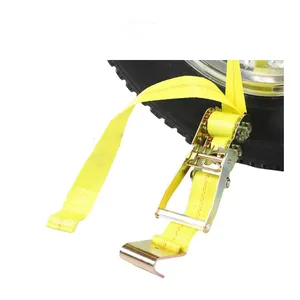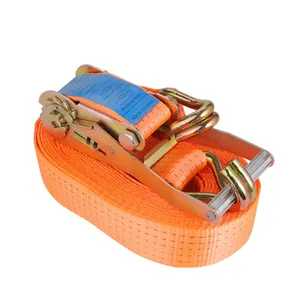Lashing Belt Overview
Lashing belts, an essential tool in the realm of cargo management, serve a critical role in securing freight during transport. These belts, often crafted from durable materials like polyester, ensure that items remain stationary, mitigating the risk of damage. The versatility of lashing belts is evident in their various applications, from securing goods in containers to stabilizing heavy equipment on trailers.
Types and Applications
The utility of lashing belts extends across multiple types, each designed to meet specific securing needs. Cargo lashing belts are commonly employed to fasten goods in the transportation industry, ensuring safety and compliance with shipping standards. For heavier loads, particularly in maritime shipping, container lashing belts provide the necessary strength to prevent cargo movement at sea. In contrast, ratchet lashing belts offer a reliable mechanism for tightening and securing loads with precision, often used in conjunction with hooks and other attachments for added stability.
Features and Materials
The construction of lashing belts often involves polyester due to its resistance to environmental factors such as UV rays and moisture. A polyester lashing belt not only exhibits strength but also maintains flexibility, crucial for securing various cargo shapes and sizes. The integration of ratchets into these belts, forming a lashing belt with ratchet, allows for incremental adjustment, enhancing load stability during transit.
Advantages of Using Lashing Belts
Utilizing lashing belts for cargo management comes with numerous advantages. The adaptability of a polyester ratchet lashing belt to different storage conditions without degradation extends its lifespan and reliability. For specific applications, such as securing vehicles, lashing ratchet belts are designed to anchor wheels firmly to trailers, providing peace of mind during vehicle transport. The strategic use of these belts, including cargo ratchet lashing belts, contributes to safer and more efficient cargo handling processes.
Choosing the Right Lashing Belt
Selecting the appropriate lashing belt involves considering the nature of the cargo, the mode of transport, and the required strength for securement. For lighter loads, options like mini ratchet straps may suffice, while larger and heavier cargo may necessitate the use of more robust belts with additional locking mechanisms. It is essential to assess the cargo's dimensions, weight, and susceptibility to movement to determine the most suitable lashing solution.





































 浙公网安备 33010002000092号
浙公网安备 33010002000092号 浙B2-20120091-4
浙B2-20120091-4